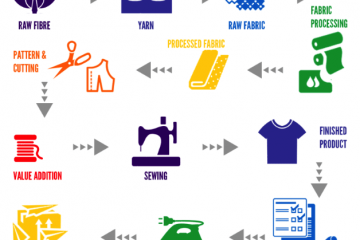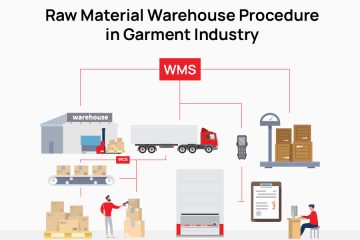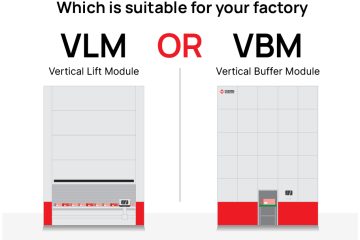Cutting Section Procedure in Garment Factory – From Planning to Cut Panel
12/08/2025Cutting Room and Its Role in Garment Production
In garment manufacturing, the cutting room is a crucial area that initiates the entire production line. It serves as the intersection of production planning, fabric spreading and cutting techniques, and quality control. Efficient management of the cutting room not only saves material but also maintains production schedules and minimizes product defects.
In practice, many professional garment factories have shown that even a small issue in the cutting room can disrupt the sewing lines that follow, affecting delivery deadlines. Therefore, standardizing the cutting process is a key factor for productivity and quality.
9-Step Cutting Line Operation Process in Garment Factories
1. Receive the production plan

The cutting room receives the production order from the planning department, which includes style, quantity, sizes, colors, fabric type, lot number, and delivery date. Even a minor error in this information can significantly impact the sewing line.
💡 Tip: Always confirm with the fabric warehouse and technical department before starting to avoid shortages or incorrect patterns.
2. Fabric relaxation
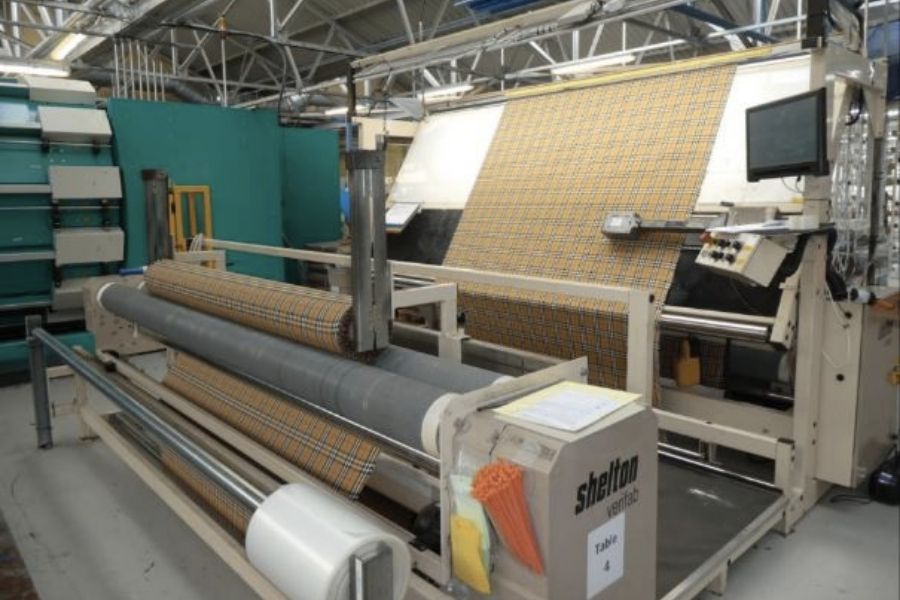
Fabric is relaxed for 12–48 hours depending on the material to release internal stress, stabilize dimensions, and reduce shrinkage after sewing.
💡 Tip: For cotton, avoid direct sunlight; for knitted fabrics, lay flat on a spreading table instead of hanging.
3. Create the cutting job sheet 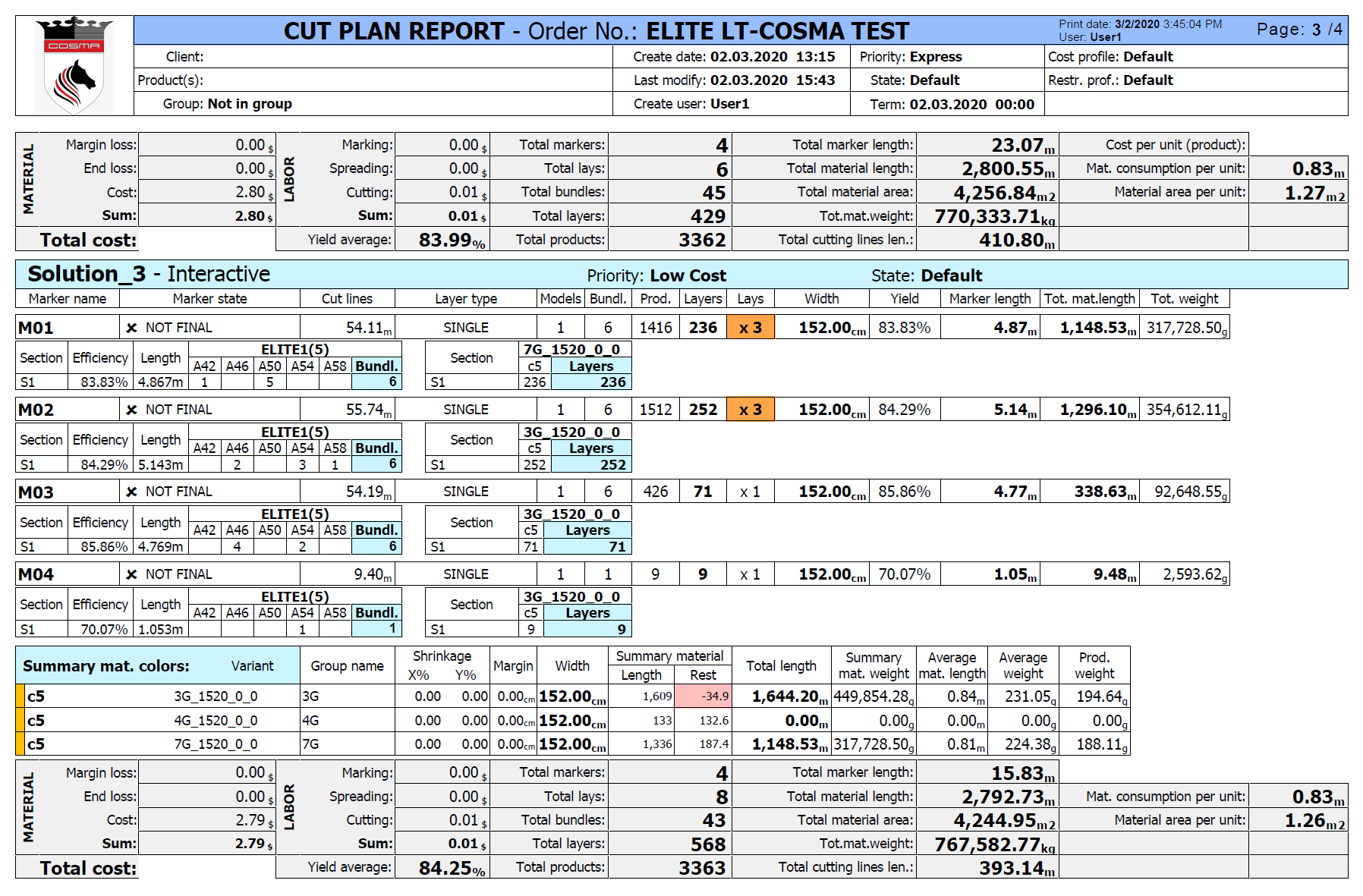
This essential step in the cutting process specifies the number of plies, table length, cutting machine type, cutting direction, and special requirements.
💡 Tip: Check feasibility before mass production, especially when changing designs or materials.
4. Marker making
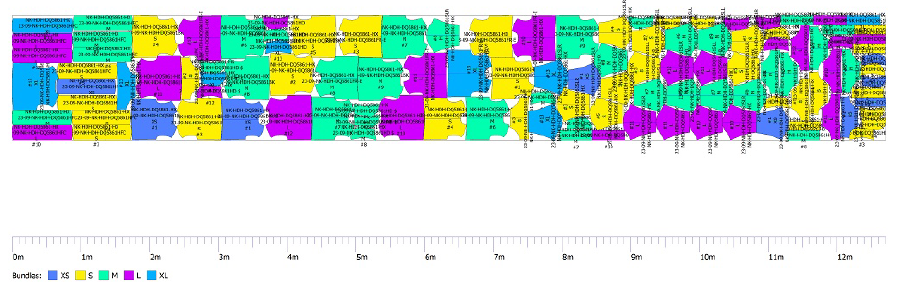
Technicians arrange pattern pieces on the fabric to save material while ensuring grainline and pattern alignment. Modern marker-making software can reduce waste by 2–5%.
💡 Tip: For stripes or plaids, prioritize pattern matching even if it increases fabric consumption.
5. Marker printing
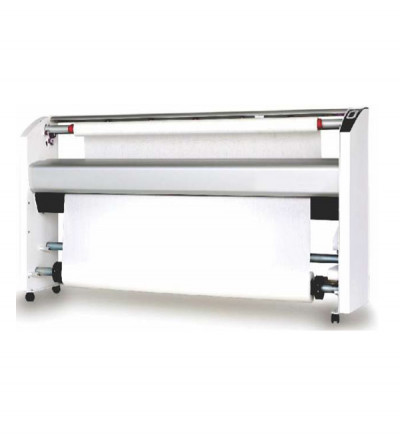
Markers are printed in large format or sent directly to CNC cutting machines. The printout must be checked for size accuracy before use.
💡 Tip: Use high-quality paper to prevent distortion; store approved markers for future orders.
6. Fabric spreading
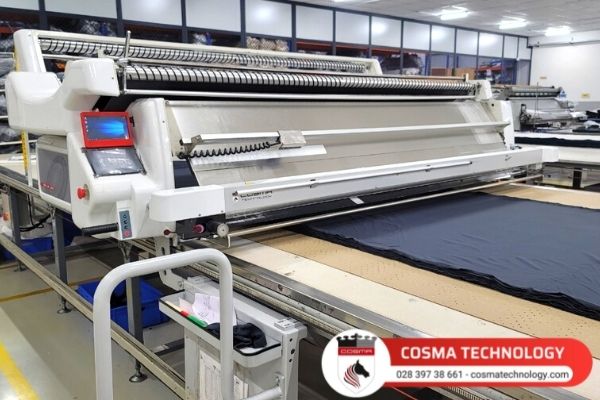
Fabric layers must be flat, edges aligned, grainline correct, and ply count as per the cutting job sheet.
💡 Tip: For stripes or plaids, match patterns layer by layer; use tables with automatic edge control when possible.
7. Fabric cutting

Depending on requirements, CNC cutting machines, straight knife cutters, or band knife cutters are used. Blades must be sharp for clean cuts without fraying.
💡 Tip: Secure stretch fabrics before cutting to prevent distortion; mark notches accurately for faster sewing alignment.
8. Inspection of cut parts

Cut parts are checked for measurements, quantity, and quality. Defects must be repaired or recut immediately.
💡 Tip: Categorize defects on the spot and keep inspection records for traceability.
9. Storage of cut parts after cutting process
Approved cut parts are bundled, labeled, and stored by size, color, and style code. Many factories use QR codes or RFID for management.
💡 Tip: Store on racks to avoid moisture damage; label both sides for easy identification.
Tips for Operating the Cutting Process in Garment Manufacturing
A smooth-running cutting department requires a combination of precise planning, suitable equipment, skilled workers, and scientific management. Leading garment factories often:
-
Provide regular training for workers on spreading, cutting, and quality inspection techniques.
-
Update marker-making software to optimize material usage.
-
Maintain equipment regularly to ensure clean, accurate cuts.
-
Synchronize production data between the cutting room and other departments to avoid bottlenecks.
When the cutting room operates efficiently, the entire production line runs smoothly, meets deadlines, and minimizes product defects. This is the key to maintaining the factory’s reputation and competitive edge.
Contact us for a consultation or to schedule a machine demo at our showroom:
-
Phone: (+84) 0983 309 910 (WhatsApp, WeChat, Zalo)
-
Email: marketing@hoshima-int.com
-
LinkedIn | Facebook | YouTube: Hoshima International
Hoshima specializes in automation solutions for the garment industry, offering:
- Smart Warehousing
- Fabric Defect and Color Inspection
- Automated Cutting Line
- Sewing Technology
- Sub-process/ PPA Automation
- Finishing Technology
- Smart Logistic


